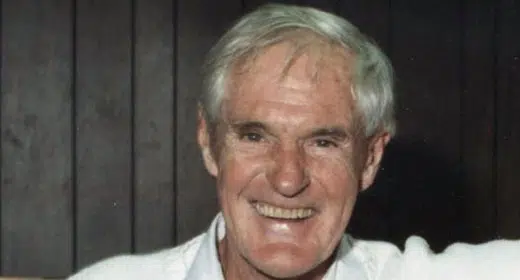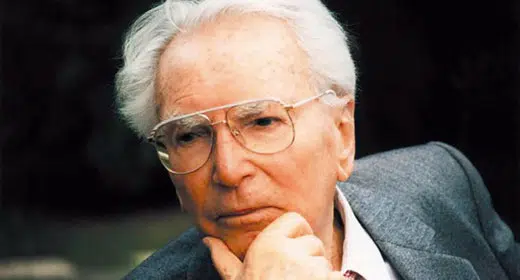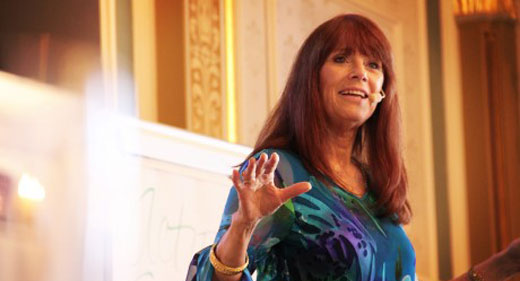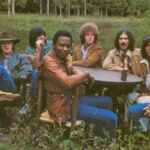Joan Borysenko, Ph.D.: For Helping Professionals and Others With 4 practical excerpts from Joan’s Book, Inner Peace for Busy People A Stressed Society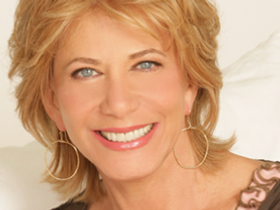 Comedian George Carlin quipped that he went into a bookstore and asked the clerk where the self-help section was. She refused to tell him since that would defeat the purpose. He could probably have followed the scuffs on the floor. In the year 2000, Americans spent $563 million on self-help books. It’s little wonder. Approximately one in three people is sleep deprived, complaining of exhaustion and trouble holding things together. We are an anxious and worried culture. Between 1990 and 1997, the number of doctors’ office visits for anxiety increased by 31 percent. The visits for panic disorder more than doubled (ibid). Approximately 12 percent of Americans are depressed, and another 10.2 percent have chronic “low mood.” Seventy to 90 percent of visits to primary-care physicians are attributed to stress. And many more people suffer outside doctors’ offices where the statistics are gathered.
Comedian George Carlin quipped that he went into a bookstore and asked the clerk where the self-help section was. She refused to tell him since that would defeat the purpose. He could probably have followed the scuffs on the floor. In the year 2000, Americans spent $563 million on self-help books. It’s little wonder. Approximately one in three people is sleep deprived, complaining of exhaustion and trouble holding things together. We are an anxious and worried culture. Between 1990 and 1997, the number of doctors’ office visits for anxiety increased by 31 percent. The visits for panic disorder more than doubled (ibid). Approximately 12 percent of Americans are depressed, and another 10.2 percent have chronic “low mood.” Seventy to 90 percent of visits to primary-care physicians are attributed to stress. And many more people suffer outside doctors’ offices where the statistics are gathered.
Burnout in Health and Helping Professionals
Unfortunately, many of the people who suffer in doctor’s offices are the health-care providers themselves. Some are so stressed that they have proceeded to the advanced state of exhaustion called burnout, which is a condition of mind, body and spirit that is distinctly different from stress. Dr. Archibald Hart, writing for both clergy and other helping professionals makes some of the following distinctions. While burnout is a defense characterized by disengagement, stress is characterized by over-engagement. In burnout emotions become blunted, whereas the stress response is more likely to involve emotional over-reactivity. Whereas burnout produces helplessness and hopelessness, stress produces urgency and hyperactivity. And while both states can lead to depression, the depressions have distinct etiologies. Depression in burnout is secondary to the grief experienced over loss of one’s ideals. In stress, the depression is related to the physical need to conserve energy and protect the body. And while stress can lead to panic, phobic and anxiety-type disorders, burnout is more linked to paranoia, detachment and depersonalization.
Burnout and Loss of Relationship to Self
I think of burnout, which will be more fully defined below, as a critical and dangerous loss of relationship to self. And when the self is lost, there is no longer any possibility of having an authentic relationship with another person. The loss of empathy and the resultant perception of other people as problems to be dispatched rather than as human beings to be evoked, is one of the hallmarks of burnout.
The term burnout was coined in reference to professionals in human services—where individuals entered their work with a high degree of idealism and high expectations of helping people and doing meaningful work. Yet they encountered demand from clients that they could not meet, were frustrated by the bureaucracy, and sensed that their skill and dedication were not appreciated. As a result, they withdrew emotionally from colleagues and clients, became apathetic, thought of their work only as a means of making money, and lost interest, energy, and dedication. They became burned out.
—David E. Hartl, Ed.D.
The literature on burnout and “compassion fatigue”—the “cost of caring” for others in emotional pain— has burgeoned in recent years. Several studies have shown that the longer people work in the helping professions, the less they tend to enjoy their occupation. The result is a distancing from the patient or client, the opposite of the relationship-centered caring that we seek to provide. Doctors, lawyers and clergy are at particular risk for burnout and have the most problems with drug abuse, alcoholism and suicide, Nurses, nursing home workers, and any healthcare professional who cares for a population where there is significant pain, trauma and likelihood of deterioration and death are also at significant risk for either high stress or burnout. It’s easy to forget that life is filled with joy and blessing when your work provides a steady diet of suffering.
Dr. William Cone, a psychologist who specializes in stress management cites data (see footnote 5) showing that RN’s actually have lower rates of burnout compared to nurse’s aides and LPNs. This is attributed to the higher workload for the lesser trained healthcare providers. Burnout, at its core, has been defined as overload, having more to do than you can possibly cope with. In a society where “crazy busy” is the watchword of the day, the healthcare provider is on a particularly crazy-making treadmill. With the advent of managed care, and the need to see more patients in less time, demands on healthcare workers have increased to proportions that often become unmanageable for any sustained period.
Insurance forms, bureaucratic hassles, information overload and the need to keep up with rapid advances in one’s field is incredibly time-consuming. Add family and community responsibilities to the mix, and the strain can be overwhelming. It is all too easy to put ourselves last on our own list, taking care of everybody else’s needs without considering our own. Cone cites lack of professional recognition as another a factor in burnout. He writes, “Some companies feel that paying people for their effort is reward enough. Nevertheless, research shows that money has never been the primary motivator in work. One of my clients once told me, ‘If all I cared about was money, I’d be a hit man. The pay’s good, the hours are great, and if my clients die, I feel successful.’”
In Burnout-The Cost of Caring, author Christina Maslach defines burnout as “a state of physical, emotional and mental exhaustion marked by physical depletion and chronic fatigue, feelings of helplessness and hopelessness, and by development of a negative self-concept and negative attitudes towards work, life and other people.” She offers five cardinal signs: keeping up the usual speed becomes more and more difficult as energy gets depleted; feelings of vocational failure creep in; the work seems less and less rewarding in proportion to all the effort invested in it; a sense of helplessness to change things takes over; and finally, innocence is lost. Cynicism about one’s self, other people, society and the world holds up a pervasive negative lens to life.
How ironic that idealistic people with the highest motivation to relate in an empathetic, healing manner through their work are most at risk for loss of self, and in the process, the physical, emotional and spiritual apparatus of caring. Most helping professionals who are burned out could write a paper on how to avoid burnout. It’s not that we don’t know what to do, it’s that too many of us simply don’t do it. Another factor in self-neglect is simple denial. It’s easy to brush off exhaustion, depression, and overwork by doing what we do best—working harder and longer. This might lead to what humorist Loretta LaRoche writes of in her book Life is Not a Stress Rehearsal—a tombstone that states, “Got everything done, dead anyway.”
Strategies for Maintaining the Relationship to Self
In response to my own encroaching sense of burnout, I did what many helping professionals are prone to do. I wrote a book to help other people with the problem I was having. It is called Inner Peace for Busy People: 52 Simple Strategies for Transforming Your Life. The book takes physical, emotional and spiritual self-care skills to a simple level that is hard to resist. Most of the strategies take very little time, other than the suggestion that every person could kick their life into a whole new orbit by taking off one day a week as a real Sabbath. By this I mean a day to drink deeply at the well of faith, family, friends, joy and rest, not a day to catch up on errands.
Every day brings a choice: to practice stress or to practice peace. The good news is that finding inner peace, and sustaining a strong relationship to self, doesn’t require hours of daily practice. You don’t have to stand on your head or stare at your navel. All it takes is a little willingness and common sense. Life is a precious gift to be savored, not an endless series of chores to complete while you complain about being “crazy busy.” Remember—your to-do list is immortal. It will live on long after you’re dead.
Relax and Be More Productive
(Excerpted from Chapter One of Inner Peace for Busy People)
When I was directing the Mind/Body Clinical Programs, a stress-disorders program at what is now the Beth Israel Deaconess Medical Center in Boston, many of the participants were high-powered executives. A little brush with a heart attack or cancer had them knocking reluctantly on my door. They wanted to use the power of their mind to heal, but were afraid that learning to relax would take away their competitive edge and dull their motivation. Visions of transcendental zombiehood danced through many minds. Some feared that they would have to trade their three-piece suits for a turban, and a lifetime of navel-gazing and herbal teas. More than once I heard the sentiment that it might be better to forget the whole thing and just die in the saddle.
My department chief and mentor, cardiologist Herbert Benson, M.D., knew better. In the late 1970s, he wrote an article for the Harvard Business Review featuring an arcane, but immediately obvious, relationship called the Yerkes-Dodson Law. Don’t let the words scare you. Named after two intrepid physiologists, this handy little law looks like an upside-down letter U on a piece of graph paper. As stress increases (the x axis), so does productivity (the y axis). In other words, the more stressed you are, the better your output until you get to the top of the curve, where the upside-down U is poised to start down again. From there it’s a rapid downhill slide to poor productivity. Whereas mild to moderate stress helps us power through to-do’s, more serious stress gives rise to the un-do’s.
Let me give you a down-home case in point. If company is coming in an hour and the house is messy, I feel slightly stressed, and challenged to clean up so as to avoid looking like a slob. I get a certain look in my eye, and swoop into action like the white tornado. My husband, Kurt, calls this “getting initialized.” My output is truly unbelievable. Like a thousand-armed goddess, I vanquish the dirt and sort the piles. But suppose, on a particularly bad dirt day, I find out that company is coming in ten minutes. The stress is so great, and the job seems so big, that I’m likely to get flustered and confused. I may then be found wandering around the house, looking dazed, with the same pile in my hand for several minutes. My internal wiring is sizzling, and smoke seems to be coming from my ears, because the load on the circuits is too large.
I believe that most busy, highly productive people operate in the high-stress range, somewhere on the descending limb of the stress/productivity curve. Their output is still high, but the internal wires are starting to short-circuit and burn. If they learned to relax and shifted back to the left on the Yerkes-Dodson curve, they would find themselves nearer to the top of the inverted U. Their output would actually be greater, while the toll on their body would be lessened. If they relaxed even more—to a point where it seemed like the turban was only another breath away—they would still be able to maintain the same output they had before, when they were burning out.
The only workable strategy for maintaining productivity over the long haul is to learn how to relax. There are literally thousands of ways to do that. My hope is that this book will give you suggestions that appeal to your unique physiology and preferences. I don’t know what relaxes you, and neither does anyone else. You are the best and only judge of what it is that shuts off the internal dialogue that’s always urging you to do more, do faster, and do better. But shut off the internal dialogue we must, if the clever system of body and mind is to restore itself and be available in its full power.
This week, put aside an hour a day—yes, I really mean that—to relax in whatever way you enjoy. You will find that instead of constricting the amount of time available for you to get things done, the day will seem to unfold in a more languorous, spacious way. The to-do list will still get done, but you will live to tell about it.
Focus on Making Small Changes
(Excerpted from Chapter 20 of Inner Peace for Busy People)
When you try to change your entire life in a day, chances are slim unless you’re being taken into the Witness Protection Program. And when you think about the effort that change takes, it can be paralyzing. But there’s a much gentler option. Let a story about my friend and colleague nurse-researcher Dr. Janet Quinn, author of I Am a Woman Finding My Voice, tell you more.
Once upon a time, Janet went to Australia to spend a week with a group of aboriginal elders. One day they piled into a van to search the arid outback for bush tucker (Australian for “food”). Items such as Witchety grubs and honey ants may seem unattractive to Westerners, but they’re delicacies in the outback.
The van was bouncing along a rutted road when suddenly it slowed way down. There was a camel in front, loping along at its own slow pace. The driver honked. The camel went faster. Then it slowed down again, apparently unconcerned about the van on its tail. The cycle of honking, trotting, and slowing down was repeated over and over again. The sight of Janet imitating the wagging gait of the camel’s behind can’t be captured in words, but perhaps you get the picture.
As she sat in the van, contemplating the dromedary, it occurred to Janet that there were miles of uninhabited land in every direction, yet the camel stayed on the road. If it had made the tiniest adjustment to its course—even a fraction of a degree—it would have had endless miles of unmolested space to roam in, and there would be respite from the honking and trotting. But apparently the camel hadn’t thought this through, and it kept to its uncomfortable course.
A lot of people do the same thing. You may be stressed and unhappy about the course of your life, but you just keep on walking in the same direction. When I’ve asked people why they don’t change their circumstances, the most common response is “fear.” They know the box that they’re stuck in. Even though it’s uncomfortable, it’s at least familiar. But if they change, there’s a chance that the unknown will be worse than their current situation. The enemy you know seems safer than the enemy you don’t know. The second most common reason why people fear change is that they feel overwhelmed by the amount of work it will take. But think of the camel. A change in course of just a fraction of a degree would have resulted in unlimited freedom.
I knew a working mother named “Shawna” whose dream was to become a nurse, but for years she was like the camel and stayed on her old course. She had a lot of valid reasons: School takes time and costs money. How could she and her son possibly survive if she quit work to study?
Then Shawna took a small step. Since her job paid for continuing-education courses at the local community college, she signed up for biology and loved it. The professor alerted her to a scholarship for older women entering nursing, and Shawna applied and was accepted. Student loans covered most of her living expenses, and she waited tables twice a week to cover the rest. Shawna became a nurse during the recent shortage. The hospital she signed on with gave her a cash bonus large enough to pay off most of her loans. One small change . . . and unimaginable opportunities opened up.
Psychologist Ellen Langer discovered that people who try new things are healthier and happier than those who stay in a rut. Even choosing a different route home from work benefits you. In her book,Mindfulness, she makes the point that variety keeps us engaged in life. You might be able to zone out if you’ve taken the same route a hundred times, but if you’re on unfamiliar turf, you have to stay tuned in. Tuning in encourages curiosity and results in a more adventurous life. An acquaintance of mine chose to drive a new way to work one day and got rear-ended in a traffic jam. But all’s well that ends well. She married the man who slammed into her.
This week, try making two small changes every day. Take a different street to work, turn off the television for an evening, go to a restaurant that serves exotic food, change your brand of toothpaste, smile at someone you don’t know, show up at work wearing Groucho Marx glasses, go to a different supermarket, get a more daring hairdo, eat dessert first, or buy or borrow a piece of clothing in a color you never wear. The possibilities are endless.
At the end of the week, reflect on what these little changes produced. Then think about your life. If you’re in a rut like Janet’s camel, identify one small step you might take toward change. There’s a whole lot of landscape to explore once you leave the beaten path.
Keep Track of Your Energy Reserves
(Excerpted from Chapter 25 of Inner Peace for Busy People)
One January I went to the Caribbean to teach a relaxing, week-long personal growth program. The waters were a superb shade of aquamarine. The sunsets were magnificent. And I was a crispy critter, exhausted and disheartened. I had traveled more than 200 days the previous year, with too little support on the work and home fronts. Then, over the Christmas holidays, a long-time employee had left under the most difficult circumstances. I had spent my precious time off fielding phone calls, getting my taxes ready, and finally hiring and training a new staff person. Busy to the max, I had failed to keep track of my energy reserves and found that the “well” had run dry.
One afternoon, my husband and I went for a sail with some of the people from the group. A vivacious redhead by the name of Donna and I got to talking. And as women often do, we went straight to the heart of the matter. A corporate trainer and coach, Donna was also used to a heavy travel schedule, but she’d learned to manage it. At one point, she leaned in close to me and took my hand. “Do you know that the life force is almost gone from your eyes?” she said. I could only nod affirmatively and sniffle a little. “Would you let me help you?” she asked.
“Dr. Donna,” as she is known, became my friend, corporate consultant, and self-care coach.
One of the most important things she asked was elegant in its power and simplicity: “On a scale of 1 to 10, where one is empty and ten is full, how full is your well?” I knew immediately what she meant. Was I joyful, creative, rejuvenated, and frisky, or was I despondent and dragged out.
I answered immediately, “I’m sucking mud.” This, I knew from long training and experience as a mind/body medical researcher and psychologist, was dangerous ground. My immune system was at a low ebb, my muscles were achy, and I felt poised on the brink of physical disaster. I was a poor advertisement for mind/body health and centered living. By failing to pay attention to my energy reserves, I had let myself wander into hazardous territory.
The “well scale” gave me a handle for recovery and a way to stay honest about taking care of myself. Awareness is the prerequisite for change. Realizing that you’re at the bottom is a wake-up call. You have two choices: to rise or to die. I decided on the former. I also committed to staying alert to my energy levels so that I wouldn’t use up my reserves, run on empty, and risk either emotional or physical disaster again.
During the period of extreme stress that had led to sucking mud, I did exactly what most people do when their backs are against the wall. I regressed. Bounding out of bed to deal with the office meltdown, I neglected to eat until late afternoon. Then I grabbed anything that was convenient. As my sons say, I ate a balanced diet from the four food groups: candy, cake, pies, and cookies. Nonetheless, I lost five pounds. This is called the high-stress diet. For a person who normally favors liberal quantities of fruits and vegetables, poor eating was a danger sign. I’d gone into survival mode. Exercise, which above all, fills my well, was a thing of the past. I couldn’t tear myself away from the office. The only positive coping strategy that remained was the support of my husband and the love and counsel of good friends.
If I have a single favorite gripe with God, it’s this: Good habits are so hard to form and sustain, while bad habits are a breeze. Most of us have times when we forget everything we know about taking care of ourselves, and then we have to pull ourselves up by the bootstraps.
So, reform was mandatory. I started exercising again and eating well. Several times a day, I would check the well scale, and once a week I’d report in to “Dr. Donna.”
“Hey, I’m a 5, a 7, or even a 10.” Over the next several months, it became clear that 7 was the cut-off point for feeling peaceful. Below that, anxiety and obsession kicked in, and creativity was hard to tap in to.
Fancy scales aren’t required to measure your stress level, although many of them exist. The simplest way to find out how you’re coping is to draw a horizontal line on a sheet of paper. Mark the far-left point “1,” and the far-right “10.” Then put a vertical line wherever you think it belongs to represent your stress level. Research shows that this simple measure is as good as the sophisticated scales. The well scale is really a vertical version of the same thing, but I think it’s even more powerful because it’s such an engaging and positive metaphor.
Your objective is to fill the well and stay aware of exactly where you are. When my well drops below 7, a mental alarm goes off. Energy reserves are getting low. I know that I need to do something rejuvenating or I’ll start a downward slide. Restorative things fall into two categories: (1) things that you can do immediately—such as taking a walk, adjusting your breathing, doing some stretching, getting into a hot shower, having some fun, talking to a friend, cuddling up with your pet, and the like; and (2) developing long-range life strategies.
Some of the long-range strategies that worked for me revolved around two more scales. When deciding what jobs to take, they had to fall below a 7 on the schlep scale, a measure of wear and tear. Going to India is a 10. Having someone drive me the two hours from Boulder to Colorado Springs is a one on the schlep scale. So I learned to make less stressful choices.
Then there was the service scale. Did a particular job match my vision of service? Running a retreat for cancer patients was a 10, consulting on the development of graduate programs was a one on the scale. Administration and evaluation are not my gifts. Developing my vision and realizing what my time was worth led to other changes. I hired more staff and put an end to driving home from the airport late at night, contributing to public safety as well as personal peace.
This week, start keeping track of your energy reserves. Try using the well scale. At least three times a day, determine how full your well is. What is the cut-off point when you start to lose steam and feel overwhelmed? Figure out what raises the water level for you quickly, and take action right away when you need to revive yourself. Taking a ten-minute walk instead of returning the next phone call can change the course of your entire day.
Building Boundaries: Learn to Say No
(Excerpted from Chapter 24 of Inner Peace for Busy People)
Like most women (and some men), saying no makes me feel guilty. There’s a nagging sense that if I refuse a reasonable request, I’m being selfish. But we need to distinguish between selfishness and self-care. A no to one thing is a yes to something else. If I decline to read a book manuscript that a stranger hopes I’ll endorse, then the time that I set aside for family and friends, for hiking and skiing, and for rest and relaxation is honored. Like most working people, I don’t have the luxury of extra time. So I have to be a good steward of the life energy that time represents.
When I was being supervised as a therapist—and receiving my own therapy in the process—learning to say no was a prime issue. My inclination was to give time and attention to practically anyone who asked. The only one I could comfortably said no to was myself. So the supervising therapist used an entire 50-minute session helping me learn how to say yes to myself by saying no to others.. He would make various requests, and whatever they were, I had to refuse.
“Would you please come over to my house and clean the bathrooms?” It was easy enough to say no to that. But when he got to things like, “I’m short of cash this week and my children are hungry. Can I borrow a hundred dollars?” I was stymied. Every fiber in my being wanted to give him the money, even though it was only an exercise. I began to justify myself and make excuses as to why it was impossible to honor his request. His response was short and incisive.
“Stop that right now! You don’t have to justify yourself. You are entitled to your own opinions and decisions because you’re a human being worthy of respect. Stop explaining yourself, and stand in that place inside where you know that you’re worthwhile. You say yes so that people will love you, and that’s the problem. Hear me. You are enough. You don’t have to keep buying people’s love. And if you won’t stop, you will be useless as a therapist, a friend, a lover, or a parent—because you’ll never be able to tell the truth or set appropriate boundaries for other people’s behavior. You are a doormat.”
That was clear. We agreed that I would carry out an assignment in saying no the following week. I actually signed a contract vowing that it would be completed as agreed. Let me give you the background. As a cancer researcher and expert in the mind/body connection, I had begun to receive a fair number of unsolicited book manuscripts. People often requested that I read their book-to-be and provide an endorsement for the back cover. I take these requests seriously, and saying yes can mean 10 or 12 hours of work. Added to the rest of my busy life, these manuscripts became a nightmare. Just the sight of one could strike terror in my heart. Nonetheless, I often read them because so many were worthwhile. I wanted to help.
The week of the assignment, I gave a lecture at a medical conference. As I was stepping down from the stage, a woman approached me, manuscript in hand. She was an unexpected survivor of advanced ovarian cancer. Having beaten the odds, she was overflowing with gratitude and told me tearfully that I had been an important part of her recovery. Now she was thrilled to close the circle and have me read her story. I was mortified. The contract flashed in front of my eyes. With a pounding heart and a dry mouth, I summoned up the courage and as kindly and gently as possible, declined to read her manuscript without justifying myself.
The poor woman went berserk. She accused me of being a fraud who didn’t care about anyone but myself. Then she stomped off, leaving a group of wide-eyed bystanders in her wake. While I’m prone to say that God has an uncanny sense of humor, this particular joke was over the top. The timing was impeccable. In retrospect, the intense discomfort was worthwhile because it made me face the worst possible scenario. She had been in a rage, and still I survived. That encounter was a turning point. Although it’s still sometimes hard to say no, I can do it when it’s the most skillful choice.
“No” is a boundary that’s like an emotional immune system. Your physical immune system has one primary function that biologists refer to as distinguishing “self” from “not-self.” Its job is to keep out invaders such as bacteria, viruses, and parasites. The immune system maintains the integrity of the body so that it can work optimally. But sometimes it makes an error and mistakes self for not-self. This results in an autoimmune condition such as arthritis or multiple sclerosis in which the body destroys part of itself. That’s just what we do to ourselves emotionally when we can’t say no.
This week, pay attention to the way you respond to requests. Some people say no too hastily. Others say yes too readily. If you feel that you’re out of balance in either direction, take your time before answering whenever you can. “Let me think about it” is an option that can give you the time to reflect and make an authentic decision about the best course of action. In the long run, this strategy will give you peace and power, even if in the short run your response is not what the other person wants to hear.
Be a Good Listener: Possible only after you have come home to yourself
(Exerpted from Chapter 45 of Inner Peace for Busy People)
One of the greatest gifts you can give to another person is listening. That simple act of kindness affords them the opportunity to share their thoughts and feelings. That’s an important part of how we learn more about ourselves and develop a stronger sense of self. The bedrock of emotional health is the loving attention of our caregivers when we’re babies. Infants in foundling homes whose needs for food and shelter are met, but whose feelings and verbalizations are not responded to, often develop failure-to-thrive syndrome. They become physically stunted and emotionally hardened.
But our need to be mirrored and responded to by other people doesn’t end with childhood. It’s a powerful emotional drive. Even as adults, being able to talk things through affects our bodies as well as our minds. An interesting study performed by psychologist James Pennebaker at Southern Methodist University showed that when people express their feelings to a shower curtain, their immune systems grow stronger. If talking to a silent plastic sheet provides so much benefit, just think of the impact that a live, loving listener can make.
When I was training to be a therapist, we had to do a fascinating exercise in pairs. One student played the role of the client, the other of the therapist. The client had to speak for 20 minutes. The therapist’s job was to listen intently, without interrupting. Whenever we had the urge to say something, we were instructed to ask ourselves what was behind the impulse to talk. Did we want to make an empathetic comment, give advice, share an insight, or get clarification or further information?
The class noticed that the urge to interrupt often stemmed from the desire to reassure the speaker that we were interested. Other times we just wanted to hear ourselves talk, or say something to appear smart and competent. Or perhaps we needed to relieve our own anxiety. That, of course, is not the role of a therapist. Overall, we concluded, most of the impulses to interrupt the client were better nipped in the bud.
The experience of being listened to without interruption was also a real eye-opener. My classmates reported almost unanimously that they felt accepted and understood by the silent listener. Because they had been allowed to keep talking, deep and often surprising insights had the chance to emerge. Without being cut off or redirected, a lot of us tapped in to a level of feeling and perception that was rare and valuable. Not a single person felt discounted by the lack of verbal response. In fact, we felt singularly appreciated.
Listening is a powerful form of communication. While the mouth is still, the heart can speak volumes about how much you care. I learned that lesson again when I sat with dying people. At first, I felt like I was supposed to say something comforting or wise. Sometimes I chattered just to relieve my own anxiety. Finally, I realized that just sitting with someone silently—even when they were not talking—was still a form of listening. In your silent watchfulness, you become a safe space, one of love’s most profound expressions.
Listening is an uncommon skill in our busy world. I recall an insightful cartoon that showed mourners at a funeral. The caption read something like: “So sorry for your loss; now back to my own problems.” I’ve been guilty of that kind of self-absorption many times. And the busier I get, the more I need to guard against it. Several times while writing this book, feeling pressed to make the deadline, I caught myself turning back to the computer just like an iron filing is drawn to a magnet, when someone wanted to talk.
While we can’t be expected to drop everything we’re doing and listen to whoever asks for our attention, we can give them the courtesy of telling them when we’ll be available. That’s a much kinder response than pretending to listen while continuing to read the paper, working at your computer, or watching television. Everyone occasionally responds with a distracted “uh-huh” when they’re not really listening, but making a habit of doing so discounts and dishonors people. When my husband, Kurt, complains that I’m not listening I take the feedback seriously because I know that my behavior will ultimately take its toll on our love.
This week, concentrate on being a good listener for other people so that they can be themselves. When they’ve expressed themselves fully, try asking questions that draw them out a little more. How did they feel when the boss started talking about lay-offs? What else was going through their minds? When you ask questions that stimulate further thought and emotional expression, you’ll eventually find yourself on sacred ground. Both of you will have insights that are surprising—those that neither of you could have had alone. That’s the magic of listening.

